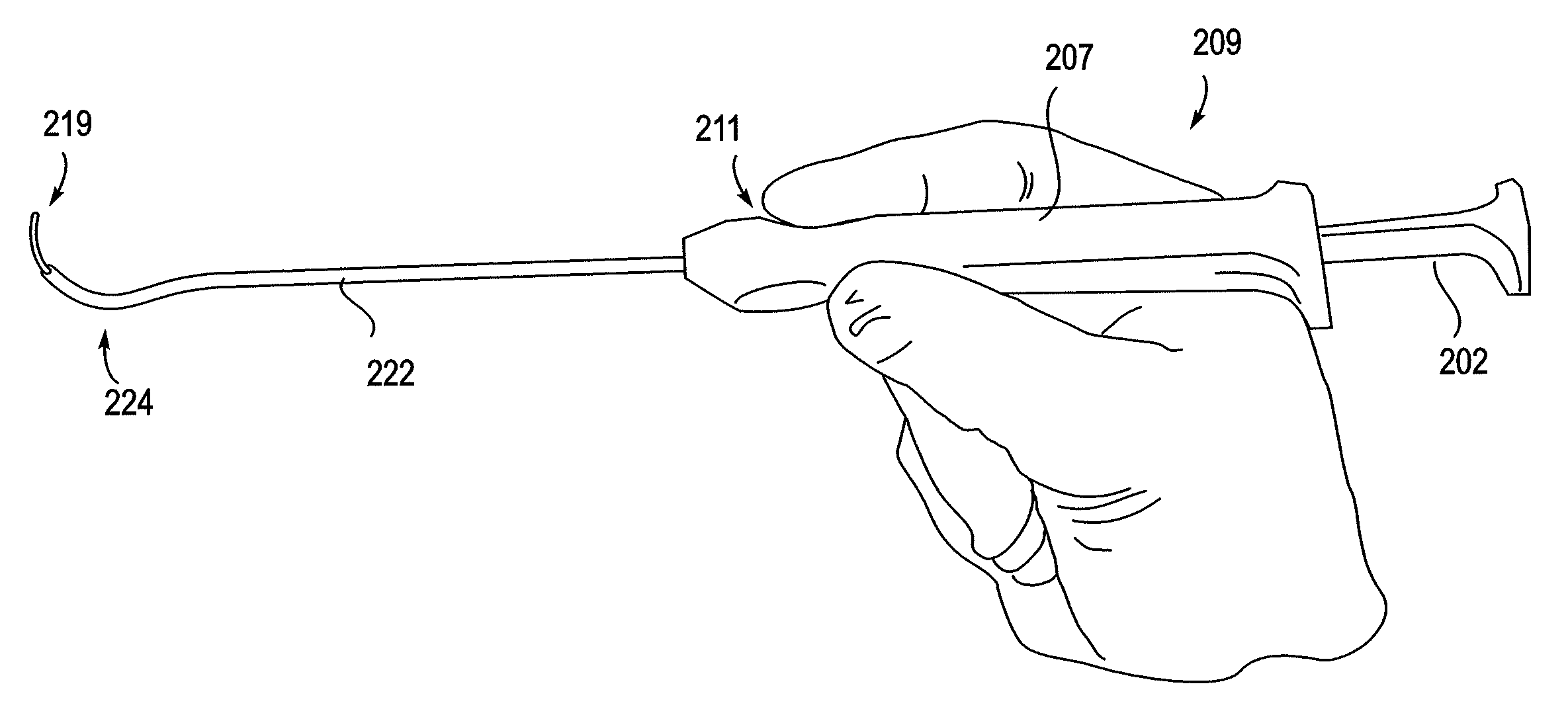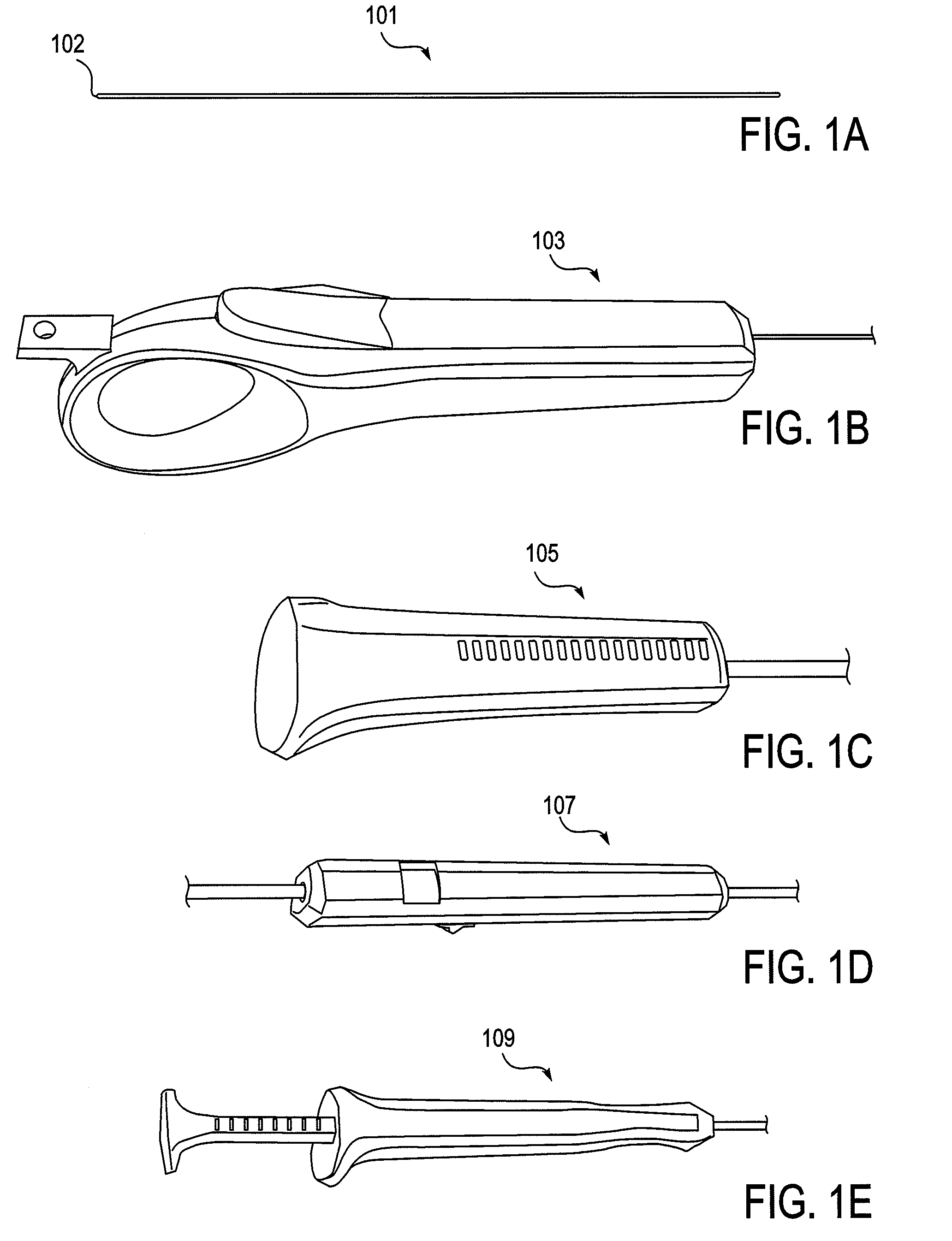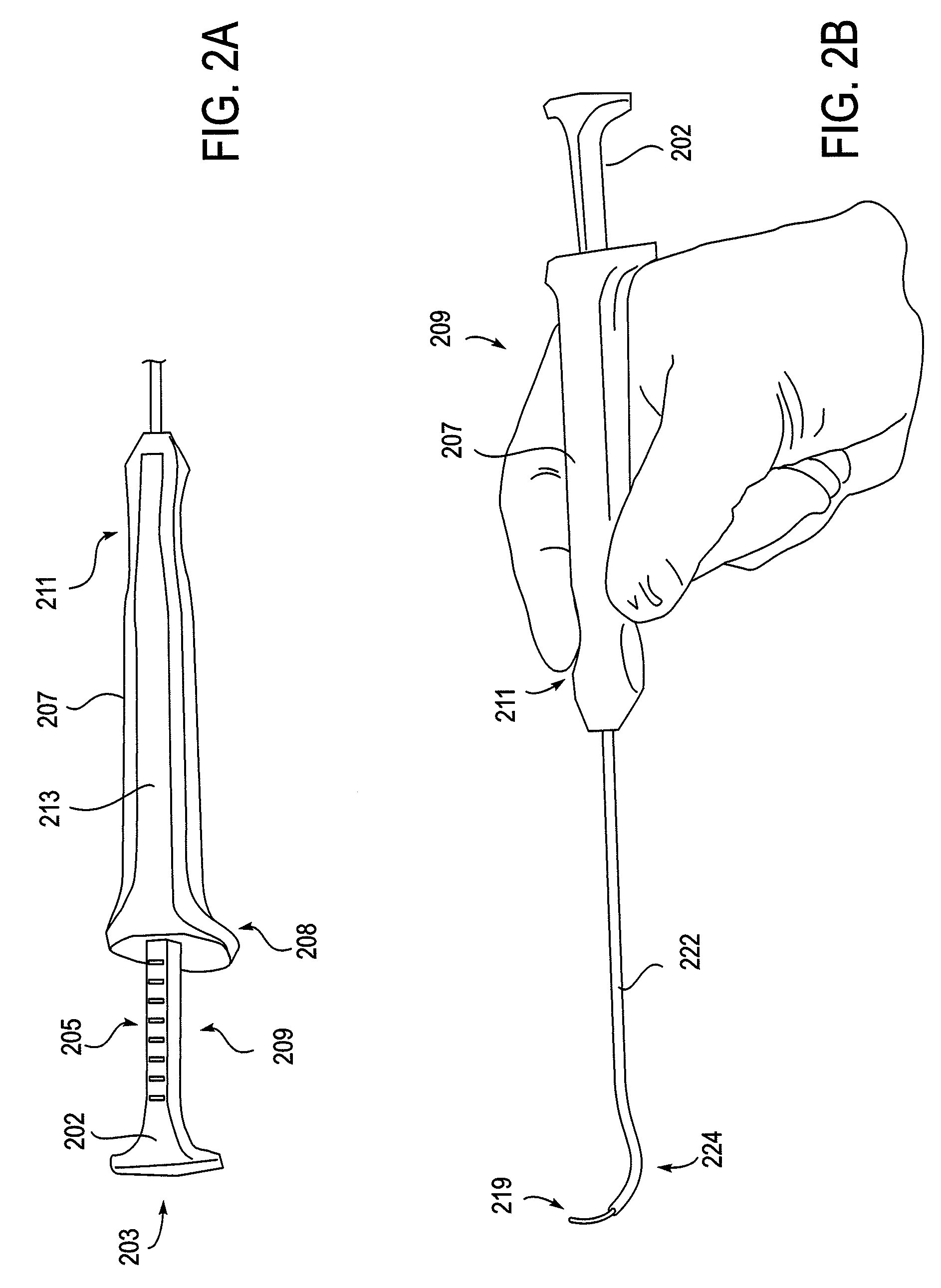Surgical tools for treatment of spinal stenosis
a technology for spinal stenosis and surgical tools, applied in the field of surgical tools for treating spinal stenosis, can solve the problems of many challenges, reduced or even no direct visualization, and the development of less invasive surgical methods and devices
- Summary
- Abstract
- Description
- Claims
- Application Information
AI Technical Summary
Benefits of technology
Problems solved by technology
Method used
Image
Examples
Embodiment Construction
[0091]The devices, systems and methods described herein may be use in any appropriate surgical procedure, particularly for the surgical treatment of spinal stenosis. For example, described herein are systems including one or more of the following devices: a pullwire, a handle for the distal end of a pullwire, a probe for positioning a pullwire, a neural localization device for use with a pullwire and a tissue modification device for use with the pullwire.
[0092]In particular, described herein are devices and systems including these devices that are configured for use together as a system. For example, the devices described herein may all be coordinated so that they may function together, and may include markings, orienting structures and other features that are common between the different devices within the system. In some variations the devices all include front / back, top / bottom, or other orientation structures on the handles of the devices. The handles may be structured in common....
PUM
 Login to View More
Login to View More Abstract
Description
Claims
Application Information
 Login to View More
Login to View More - R&D
- Intellectual Property
- Life Sciences
- Materials
- Tech Scout
- Unparalleled Data Quality
- Higher Quality Content
- 60% Fewer Hallucinations
Browse by: Latest US Patents, China's latest patents, Technical Efficacy Thesaurus, Application Domain, Technology Topic, Popular Technical Reports.
© 2025 PatSnap. All rights reserved.Legal|Privacy policy|Modern Slavery Act Transparency Statement|Sitemap|About US| Contact US: help@patsnap.com



